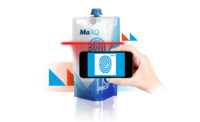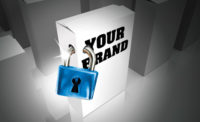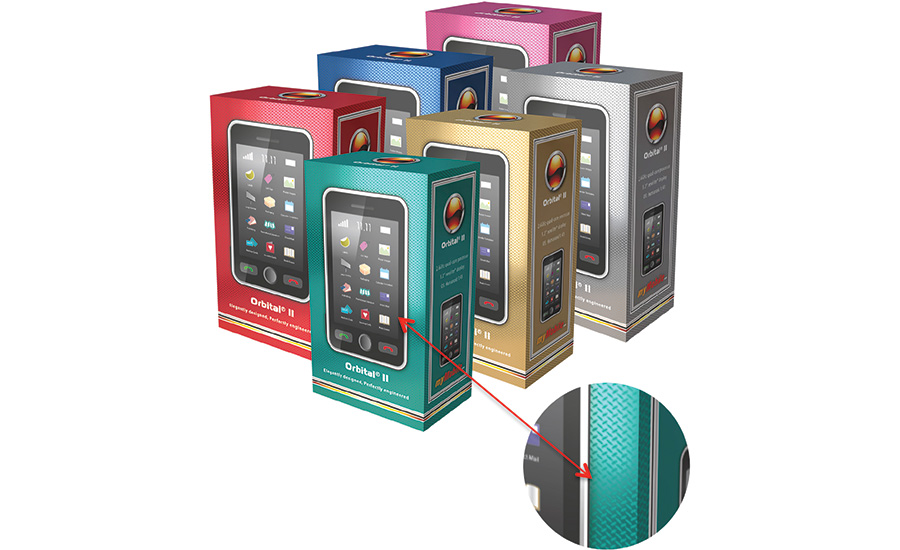Category Analysis: Anti-Counterfeiting Packaging Methods

COLOR-LOGIC DIMENSIONAL-FX

DIGIMARC BARCODE

THINFILM NFC OPENSENSE



Getting Defensive
It’s said that opportunity makes a thief. The World Customs Organization figures seven percent of the total world trade is counterfeit. We figure that’s a lot of opportunities others are taking to steal your good name. It’s common knowledge more than luxury goods are being faked — and your customers are wary. Just visit Amazon to read reviews; you’ll see plenty of comments that ask previous purchasers about product authenticity.
“Short term and longer term lost revenue are key aspects of why brands need to address counterfeiting of their products,” says Mark Geeves, director of sales and marketing, Color-Logic. “Consumers who utilize an inferior product inside the packaging will not select that package again. Brands therefore lose the initial sale and sales that would occur afterward.”
There are many ways to protect your products, from trademarks to watermarks. We won’t sugarcoat it: that doesn’t mean keeping people from counterfeiting your brand is a piece of cake. The good news is an ounce of prevention is worth a pound of cure.
“When included at the design stage, security features offer protective elements that tend to resist counterfeiting more effectively than security features that are simply tacked on as an afterthought,” says Rich Einhorn, VP, SICPA Product Security LLC (www.sicpa.com).
We’ve gathered several printing and technology options to show you what can be done to help stop fraud before it starts. Talk with your designers, suppliers and manufacturers about more ways to keep your brand and customers safe.
1. Use inks and patterns to hinder counterfeiters.
COLOR-LOGIC DIMENSIONAL-FX
“Color-Logic focuses on being a first line of defense from counterfeiting by allowing the packaging to be protective but also cost-effective to produce,” says Geeves.
In the case of Color-Logic Dimensional-FX, designers can make a selected artwork area appear to change color and dimension as light reflects on the pack. The feature provides a level of security within a visually attractive design. Dimensional-FX can also be used to place minute patterns in the background of packaging, allowing the designer to create complex light-changing art without detracting the viewer’s focal point from the actual product. In the mobile phone box shown here, a pattern was embedded in the background of a design printed on a foil substrate using white ink. The effect helps the package stand out on the shelf while deterring counterfeiters. www.color-logic.com
2. Try printing methods that alert retailers and customers of fraudulent practices and products.
DIGIMARC BARCODE
Digimarc Barcodes can’t be seen but are immediately recognized by retail POS scanners, smartphones and similar sensors. Because they are invisible, Digimarc Barcodes can be applied to the entire surface of product packaging. This capability speeds retail checkout because cashiers no longer have to properly orient the package to scan, and it helps stores with loss prevention.
“The Digimarc Barcode prevents barcode swapping,” says Larry Logan, CMO, Digimarc Corporation. “Shoplifters sometimes peel UPC labels from a lower-priced item and apply them to more expensive premium products, and sophisticated criminals trade lower-priced UPC codes online, printing them and overlaying onto higher-priced items. The Digimarc Barcode, imperceptibly replicated hundreds of times across the package, tattles on the criminal by ringing up the true price.”
In addition, serialized Digimarc Barcodes enable a wide variety of track-and-trace applications to help verify the authenticity and provenance of products at the item level, creating a strong deterrence against product diversion and counterfeiting and helping ensure customers get real products. www.digimarc.com
3. Implement technology that lets brands follow the package to the shelf.
THINFILM NFC OPENSENSE
Thinfilm’s OpenSense tags deliver thin, flexible, cost-effective protection with significant improvements over traditional NFC and RFID-based authentication, the company says. The proprietary and patent-pending technology overcomes those limitations by providing smartphone-centric NFC readability before and after product opening. Unique identifiers within each OpenSense tag support applications fighting product diversion, counterfeiting, unauthorized refills and the use of forged containers.
“The categories that benefit most from brands using Thinfilm’s NFC OpenSense technology are verticals that tend to have a significant amount of counterfeiting activity, and/or ones that are interested in engaging with consumers via smartphones to drive sales and strengthen relationships,” says Bill Cummings, VP, marketing and communications, Thinfilm. “We’ve seen a tremendous amount of interest from a number of industries, including wine and spirits, pharmaceuticals, cosmetics, medical devices, tobacco and other FMCG firms. The companies range from global market leaders and midsize companies to boutique/independent brands.” thinfilm.no
Looking for a reprint of this article?
From high-res PDFs to custom plaques, order your copy today!











